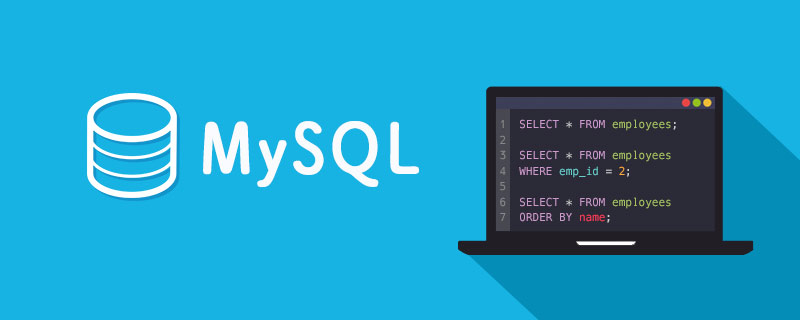

Case: Create the database index_test, create two data tables test_table1 and test_table2 in the index_test database according to the structure of the following table, and complete the data table according to the operation process basic operations.
(1) Log in to the MySQL database
(2) Create the database index_test
(3) Create the table test_table1
(4) Create the table test_table2, the storage engine is MyISAM
(5) Use the alter table statement to create a common index named ComDateIdx on the birth field of the table test_table2
(6) Use the alter table statement to add a unique index named UniqIdx2 on the id field of the table test_table2 and arrange it in descending order
(7) Use create index to create a combined index named MultiColidx2 on the firstname, middlename and lastname fields
(8) Use create index to create a full-text index named FTidx on the title field
(9) Use The alter table statement deletes the unique index named Uniqidx in the table test_table1
(10) Use the drop index statement to delete the combined index named MultiColidx2 in the table test_table2
A few points to note
( Free learning recommendations: mysql video tutorial)
C:\Users\Hudie>mysql -h localhost -u root -p Enter password: *******
mysql> create database index_test;Query OK, 1 row affected (0.06 sec)mysql> use index_test;Database changed
mysql> create table test_table1 -> ( -> id int not null primary key auto_increment, -> name char(100) not null, -> address char(100) not null, -> description char(100) not null, -> unique index uniqidx(id), -> index MultiColidx(name(20),address(30) ), -> index Comidx(description(30)) -> );Query OK, 0 rows affected (0.11 sec)mysql> show create table test_table1 \G*************************** 1. row *************************** Table: test_table1Create Table: CREATE TABLE `test_table1` ( `id` int(11) NOT NULL AUTO_INCREMENT, `name` char(100) NOT NULL, `address` char(100) NOT NULL, `description` char(100) NOT NULL, PRIMARY KEY (`id`), UNIQUE KEY `uniqidx` (`id`), KEY `MultiColidx` (`name`(20),`address`(30)), KEY `Comidx` (`description`(30))) ENGINE=InnoDB DEFAULT CHARSET=utf8mb4 COLLATE=utf8mb4_0900_ai_ci1 row in set (0.06 sec)
You can see that 3 indexes were successfully created in the test_table table, each with the name uniqidx on the id field A unique index on the name and address fields; a normal index of length 30 on the description field.
mysql> create table test_table2 -> ( -> id int not null primary key auto_increment, -> firstname char(100) not null, -> middlename char(100) not null, -> lastname char(100) not null, -> birth date not null, -> title char(100) null -> )ENGINE=MyISAM;Query OK, 0 rows affected (0.07 sec)
mysql> alter table test_table2 add index ComDateidx(birth);Query OK, 0 rows affected (0.13 sec)Records: 0 Duplicates: 0 Warnings: 0
mysql> alter table test_table2 add unique index Uniqidx(id);Query OK, 0 rows affected (0.11 sec)Records: 0 Duplicates: 0 Warnings: 0
mysql> create index MultiColidx2 on test_table2(firstname,middlename);Query OK, 0 rows affected (0.12 sec)Records: 0 Duplicates: 0 Warnings: 0
mysql> create fulltext index ftidx on test_table2(title);Query OK, 0 rows affected (0.13 sec)Records: 0 Duplicates: 0 Warnings: 0
mysql> alter table test_table1 drop index uniqidx;Query OK, 0 rows affected (0.09 sec)Records: 0 Duplicates: 0 Warnings: 0
mysql> drop index MultiColidx2 on test_table2;Query OK, 0 rows affected (0.12 sec)Records: 0 Duplicates: 0 Warnings: 0
1. Indexes are so important to the performance of the database , how to use it?
2. Try to use short indexes
Related free learning recommendations: mysql database(Video)
The above is the detailed content of Detailed explanation of how MySQL creates indexes (case). For more information, please follow other related articles on the PHP Chinese website!
 What are the data analysis methods?
What are the data analysis methods?
 Why can't my mobile phone make calls but not surf the Internet?
Why can't my mobile phone make calls but not surf the Internet?
 What are the css3 gradient properties?
What are the css3 gradient properties?
 What is the article tag used to define?
What is the article tag used to define?
 Win10 does not support the disk layout solution of Uefi firmware
Win10 does not support the disk layout solution of Uefi firmware
 How to create a web page in python
How to create a web page in python
 python configure environment variables
python configure environment variables
 What are the design patterns used by laravel?
What are the design patterns used by laravel?
 How to use union in c language
How to use union in c language